EV Passed Sales Tipping Point and EV Charging Coming to Biggest Truck/Travel Stop Chain
Couple of big items in the recent news about electric vehicles (EVs) means I’ve got to stop procrastinating on several posts about EVs, specifically EV charging. Most EV owners charge at home, overnight while sleeping. The sore subject of EV charging for renters and home owners without off-street parking is for a future post.
Today is the first of a couple of posts on driving an EV between metropolitan areas. As stated above, a couple of things are changing regarding EVs:
The U.S. is the latest country to pass what’s become a critical EV tipping point: 5 per cent of new car sales powered only by electricity. This threshold signals the start of mass EV adoption, the period when technological preferences rapidly flip, according to the analysis.
For the past six months, the U.S. joined Europe and China — collectively the three largest car markets — in moving beyond the 5 per cent tipping point. If the U.S. follows the trend established by 18 countries that came before it, a quarter of new car sales could be electric by the end of 2025. That would be a year or two ahead of most major forecasts. (Financial Post)
I know 5% isn’t much, but Merriam-Webster defines a tipping point as “the critical point in a situation, process, or system beyond which a significant and often unstoppable effect or change takes place.” EV adoption will now pick up, it’s no longer just early adopters.
Again, most EVs are charged at home, or sometimes at work. It is when you want to travel outside your metropolitan area that you need to think about using a public charger. Like EV sales, charger networks are quickly growing, though still small.
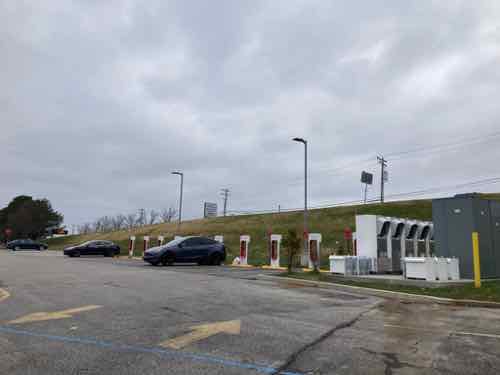
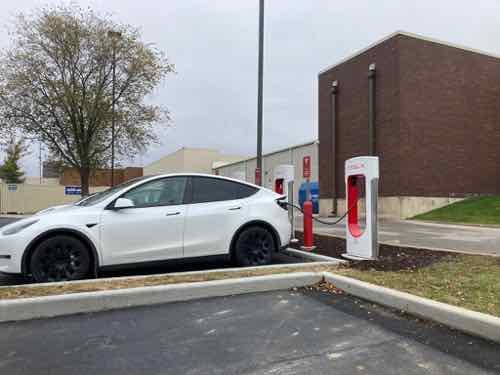
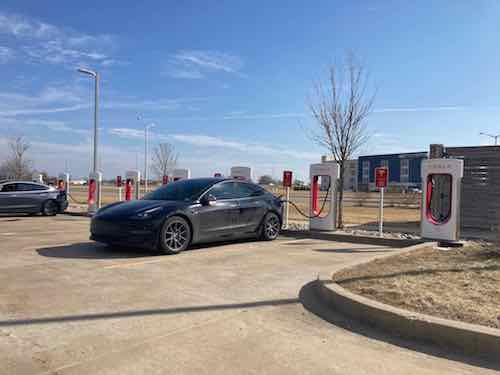
Electrify America is one of the leading charging networks, with the more connections at speeds of 150-350kW than any other charging network. It’s a subsidiary of Volkswagen, part of their settlement for the dieselgate scandal.
As part of a consent decree reached with United States officials in 2016, Volkswagen agreed to numerous actions, with US$2 billion in total, to promote electric vehicle use over 10 years to atone for the additional air pollution it caused. One aspect of the program was a pledge to establish a public electric vehicle charging network.
The Electrify America brand was unveiled in January 2017, along with its first phase of station buildout. Its first station opened in May 2018, in Chicopee, Massachusetts. In 2022, Siemens became its first external investor with a minority shareholder stake and a seat on the board. (Wikipedia)
Most of the Electrify America (EA) chargers I’ve seen are located in Walmart Parking lots, which are spacious and often near interstate highways. All non-Tesla EVs can use their chargers without an adapter. Thus, many non-Volkswagen EV manufacturers have embraced the network. Examples include Ford, Hyundai, and EV-only VinFast.
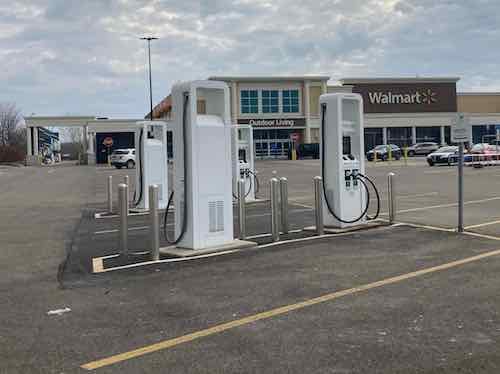
General Motors is going a different direction, one that will dramatically increase the number of direct current (DC) chargers nationally:
GM and Pilot Company are employing EVgo, which, with over 850 locations, is the most extensive fast-charging network in the country. EVgo will install, operate, and maintain GM and Pilot Company’s charging network through its eXtend program, with the first wave of chargers expected to be operational by 2023. Along with the EVgo logo, the chargers will be branded with both the Pilot Flying J logo and GM’s charging brand, Ultium Charge 360. (Car and Driver)
This is a smart move by GM, Pilot, and EVgo. Why? General Motors wants to become the leading seller of EVs in North America, while Volkswagen Group (VW, Audi, Porsche, and others) wants to be the worldwide leader. VW’s Electrify America and Electrify Canada networks are part of their strategy for dominance. So it makes sense GM would want to be a part of a competing charging network.
Pilot/Flying J is among the biggest chain of travel/truck stops, with 550 “locations in 44 states and six Canadian provinces.” Fuel sales drive sales of food, drinks. They clearly recognize the need to diversify so they can also attract travelers in EVs. The EVgo network has been around a while, in St. Louis you’ll see their chargers at Commerce Bank locations — not convenient to interstate travelers. This deal gives EVgo access to large travel center real estate very close to interstate exists, something it very much needed.
Locating chargers at facilities open 24 hours a day give users a chance to use the restroom, get a bite/beverage, etc. Very different from current chargers, including Tesla’s extensive supercharger network.
Adding EV charging to 500+ existing travel centers isn’t going to be cheap, but this is a part of GM’s $750 million dollar investment in EV charging infrastructure. A major investor in Pilot is Berkshire Hathaways (Warren Buffet). Other travel centers/stops like Oklahoma City-based Love’s will likely quickly form similar partnerships.
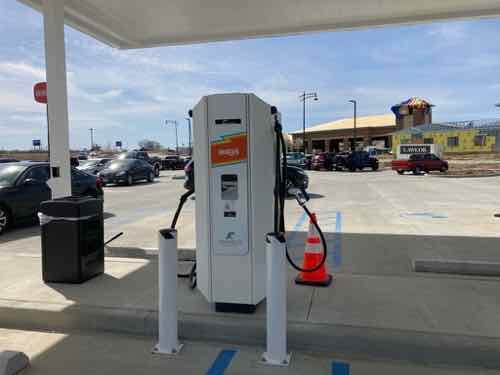
You might be thinking about non-semi centers like Buc-ee’s and the new copycat Wally’s, the latter with a location along I-44 in Fenton MO. Well, the well-known Buc-ee’s chain partnered with Tesla to bring their supercharger network to its locations in numerous southern states. Tesla will eventually open their network to non-Tesla EVs. Where does that leave the two locations of Wally’s and frankly most of EVgo’s network?
In the slow lane.
Let me explain what I mean by slow lane. Let’s suppose you get a new 2022 Hyundai Ioniq 5 with its very fast 800 volt architecture and want to take a road trip. The 6-figure Porsche Tycan is the best-known example of an EV with 800v architecture, the Hyundai & cousin Kia EV6 are the lowest priced EVs sold in North America with very fast 800v architecture.
If you stop at a charger with a rate of 150kW-350kW your stop will be considerably shorter than had you stopped at a 50kW charger.
Going from 15% to 66% on 150kW+ would require just 15 minutes of charging time.
On the other hand, at 50kW going from 30% to 100% would require 70 minutes. To be fair as batteries get toward 100% the rate of charging does slow.
Additionally Wally’s two locations doesn’t use one of the major charging networks, or accept major credit cards. Instead you have to download another app onto your smartphone, add funds to that app, then use the app to charge your EV. Just downloading, setting up, and funding a new app would require more than the 15 minutes spent charging at Electrify America.
The followup to this post will be on the subject of planning a road trip in a variety of EVs, comparing route planning apps, charging networks, and technology.
No, we’ve not bought an EV. I’ve just finally gotten somewhat of a handle on the topic.
— Steve Patterson